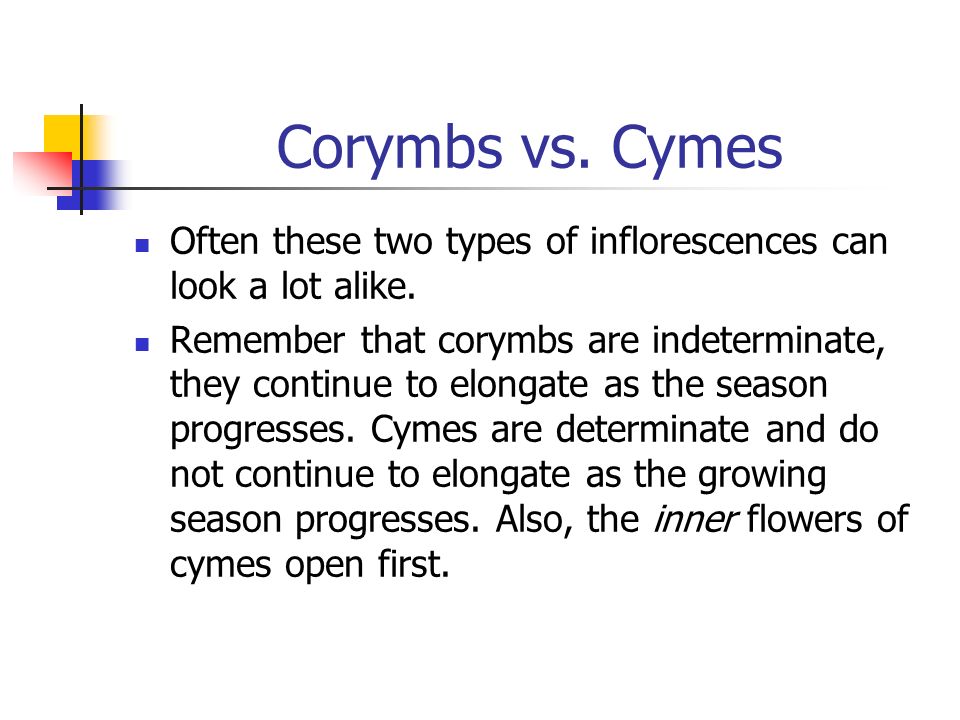


In the cymose branching, the main axis terminates in the flower and one or more lateral branches arise from the base. An inflorescence is categorized on the basis of the arrangement of flowers on a main axis (peduncle) and by the timing of its flowering (determinate and indeterminate). Thus no new flower buds can be produced at the tip and other flowers are produced from lateral buds beneath. It is also called definite branching because the growth of axis remains limited in this type of branching. In this type of branching, the main axis terminates into a flower or a tendril, and before it terminates it gives off one or more lateral branches. The older flowers present at the base have longer stalk as compared to the upper younger flowers. They are of three types namely, uniparous cymose, biparous cymose and multiparous cymose. Cymose: In the cymose type of branching the growth of the primary axis is checked or arrested and a few branches or secondary axes grow vigorously for some time. The first is Wood Forget-me-not and the second Russian Comfrey. A cymose inflorescence arranged in pairs at the nodes, in the manner of a false whorl, is called a verticillaster (see photograph). What is Racemose Inflorescence – Definition, Structure, Types 2. Characteristics and Examples of different racemose inflorescence. Catkin: This is a drooping spike, which bears unisexual sessile flowers. A cymose branching complex is called a cyme. The different types of the cymose inflorescence are: When the fleshy axis becomes branched and each branch bears a spadix being covered by a bract it is called a compound spadix as in date palm, coconut etc. In a cymose inflorescence, the axis has limited growth and the flowers are arranged in a basipetal manner which means that the older flowers are found towards the top and the younger ones towards the base of the axis. The number of ends in a glycogen molecule would be Strictly, it is the part of the shoot of seed plants where flowers are formed and which is accordingly modified.


 0 kommentar(er)
0 kommentar(er)
